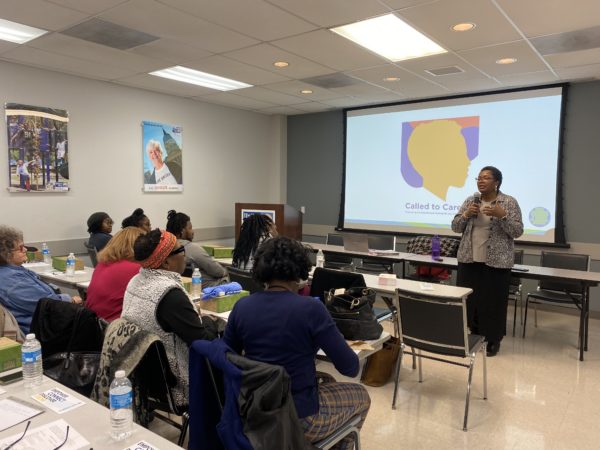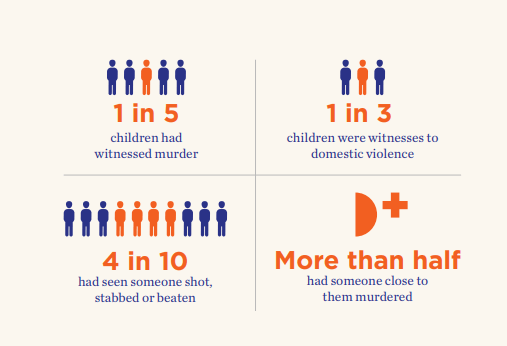

On Tuesday, nearly 100 social workers from across Louisiana gathered to preview a new report from the New Orleans Children & Youth Planning Board (CYPB) titled “Called to Care.” The report, which was ordered by the New Orleans City Council in 2018, examines childhood trauma across the city and provides a path forward towards a New Orleans where children can heal and thrive.
Child Trauma in New Orleans
According to the National Institute of Mental Health, childhood trauma is defined as “when a child experiences a psychological event that is emotionally painful or distressful,” which “results in lasting mental and physical effects.” Childhood trauma can take many forms, including:
- Physical and sexual abuse
- Neglect
- Bullying
- Community-based violence
- Extreme poverty
- Loss of a parent or primary caregiver
- Natural disasters
These experiences can cause serious stress reactions in children, and may even disrupt a child’s neurodevelopment, which can damage their ability to cope with negative emotions, and may even impair their cognitive functioning. These reactions may result in changes in a child’s ability to think, learn, and concentrate; poor impulse control; lower self-image; and an increase in emotional responses.

Between 2012 and 2018, over 5000 Central City youth were surveyed by the Institute of Women & Ethnic Studies (IWES). The findings of that survey were quite stunning:
- One in five children had witnessed a murder
- One in three children were witnesses to domestic violence
- Four in 10 had seen someone shot, stabbed, or beaten
- More than half had someone close to them murdered
During Tuesday’s event, viewers screened The Children of Central City, a documentary special report by Jonathan Bullington and Richard Webster, with photos and video by Brett Duke and Emma Scott. The documentary initially premiered on June 13th on Nola.com-Times-Picayune.
According to the CYPB report, Central City serves as a microcosm of what is happening across New Orleans. According to FBI statistics, New Orleans had the 4th highest murder rate in the country among cities with 250+ residents in 2017 – marking the city’s 30th straight year in the top five (not including 2005). In addition, Louisiana:
- Had the third-highest percentage of people living below poverty level
- Had the second-lowest income growth
- Had the fourth-lowest percentage of population 25 years old and younger with a high school diploma or higher
- Had the third-highest overall crime rate
“It’s not a coincidence that the New Orleans juvenile delinquency programs and detention facilities house predominantly large numbers of poor black youth” for crimes related to the symptoms of trauma, the CYBP report states. It is also “not a coincidence that there are excessively high levels of immune system-related illnesses in poor black neighborhoods in New Orleans.” These are not separate issues – both can be traced back to the effects of ongoing trauma.
Communities of Poverty By Design
According to the George Washington University, School of Public Health Building Community Resilience (BCR) Initiative’s research, adverse community environments are usually the result of systemic practices that amount to “Inequity by Design.” In other words, the poor of New Orleans live in concentrated poverty by design – as a result of criminal and social policies that have been enacted throughout the course of the city’s 300-year history. This can include redlining, inequitable enforcement of criminal justice policies, predatory lending practices in the real estate industry, and location and performance-based public education funding.
The result of this ongoing systemic inequity results in a community robbed of the elements necessary to thrive and a continuous cycle of limited opportunity, discrimination, poverty, and ongoing trauma. In order to overcome this cycle, the National Child Traumatic Stress Network finds that communities must acknowledge the effects of racism and oppression and work to overcome those effects.
Building A Community that Heals
The CYPB found that “the current small-scale and disconnected system of schools, healthcare agencies, and nonprofits do not provide enough support and are not trauma-based in their approach” to helping New Orleans children. “As a result,” the report states, “they neither adequately meet the numbers of children in need nor do they provide a systematic process that can counter the symptoms of the traumatic experiences the children have suffered.”
“Currently efforts to combat this rising issue are administered in loosely stitched together programs across agencies that lack the oversight mechanism and funding to coordinate their activities. Many of which do not have the training and capabilities to provide trauma-informed services. And, too many children have no access to this existing programming or have not been screened and identified as dealing with multiple risk factors and potenitally suffering from trauma.
In order to help children across the city heal from the effects of trauma, New Orleans needs to focus on becoming a community that heals. In order to accomplish this, the CYPB issued a number of recommendations involving every aspect of the city:
- Governance and leadership
- Policy
- Physical environment
- Engagement and involvement
- Cross-sector collaboration
- Screening, assessment, and treatment services
- Training and workforce development
- Progress monitoring and quality assurance
- Financing
- Evaluation
In order to implement the many recommendations (which you can view here), the CYPB laid out a full implementation plan for their suggestions that included:
- Creating an annualized action plan to advance coordination and accountability between all elements;
- Co-author a citywide vision to set the intention, and share that vision across all sectors
- Creation and adoption of a citywide trauma policy;
- Issuing a call to action to all stakeholders, service providers, sector actors/leaders, etc. to join in assisting in executing efforts to advance the citywide vision and encourage residents to join in by reaching out through all media platforms including social media;
- City Staff and community member participation in community learning/healing convenings across each council district that increase knowledge of what trauma is, increase neighborhood engagement, and builds skills for greater self-care and community care;
- Create an expectation for the community, provider, practice, content, and deliverables to be reviewed and built upon with annual content, impact, and accountability check-ins;
- Convene ‘funding conversations in the round’ to launch real discussions around the current disconnect between services, needs, true costs, and expectations for use;
- Build appropriate processes in partnership with the Mayor’s Office of Youth and Families to drive vision, mission, plan, and implementation across the city, particularly in the New Orleans Recreation Development Commission, the New Orleans Police Department, and the Juvenile Justice Intervention Center.
For a full list of the recommendations in the CYBP report, as well as the full implementation plan, you can view “Called to Care” here.
Jenn Bentley is a freelance journalist and writer whose work has been featured in Yahoo News, Wander No More, Big Easy Magazine, and more. In 2019, she was given the title of “Most Fearless” by The Bayou Brief. Follow her on Twitter: @JennBentley_